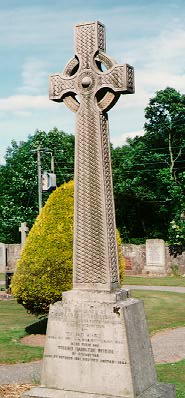|
|
Irish Symbols |
|
||||||
|
|
Shamrock The shamrock has long been associated with Ireland, since the days of St Patrick in fact. Like many other Irish stories there is a legend behind the shamrock as well and like many other stories it is a believable one. As the story goes, Patrick, now a priest returned to Ireland to preach Christianity and convert the pagans to the following of Jesus Christ. He was having some difficulty getting the Irish to understand (the stupid people that we are), especially on the subject of the Holy Trinity. As St Patrick was thinking about how to explain this idea to the pagans, he passed through a field of shamrocks. Looking at the shamrocks he saw three leaves, but one plant….. Three parts, one God. In this way St Patrick went all over Ireland with his shamrock, preaching and converting. Since then the shamrock has come to represent all things Irish. On the crest of the international Rugby and Soccer teams there is a shamrock, on St Patrick's day we all wear shamrocks. In fact the shamrock has become Ireland’s national symbol. |
|||||||
|
Saint Patrick Saint Patrick is the patron saint of Ireland. He was born in Wales into a Christian family. When he was young Patrick was kidnapped by pirates and sold as a slave to a pig farmer. He had to herd pigs for the pig farmer in the north of Ireland and out in the fields he became very close to God. One day Patrick had a dream. In his dream he was told to go to the harbour where he would find a boat waiting to take him back home to Wales. Patrick ran away and found the boat. Patrick remained in Wales for many years and became a priest. Eventually he felt a longing to return to Ireland and to spread Christianity. At this time, about 500AD, all the Irish were Celts. Saint Patrick used the shamrock to teach the Celts about the Holy Trinity. He spent the rest of his life converting Irish Celts to Christianity. Today we remember Patrick on the 17th of March, "Saint Patrick's Day" when parades are held in cities and towns all around Ireland. The shamrock used by Patrick has become one of Ireland's most famous symbols and is associated with Ireland all over the world. |
|
|||||||
|
|
Celtic Cross The Celtic Cross or High Cross is a stone cross, found in Celtic monasteries. Celtic masons had decorated stones over the bodies of the dead long before Christianity came. When the Celts became Christian they carried on this practice using Celtic crosses, a symbol of their religion. The first of these crosses were produced around 600AD and were fairly basic. By 900AD these were works of skill and provide a demonstration of how the monks improved at their craft. The later crosses were larger then their earlier predecessors and often took large amounts of time to carve. The crosses made in the 9th and 10th centuries also had scenes from the bible carved on them, much like the twelve panels on the walls of Irish churches today. Using these it was common for younger monks and local people to be educated at the high crosses as they would see the illustrations of what was happening in the Bible by looking at the cross. However their original purpose remained in use; as head stones for the important monks who died in a monastery. |
|||||||
|
The Claddagh Ring The story of the claddagh ring begins in the town of Claddagh in county Galway. There are a number of different stories regarding the claddagh ring and its history and the truth of the matter is that nobody is absolutely sure which of them is correct. One of the stories dates back to the time of King Philip of Spain and his counterpart, Queen Elizabeth of England. When Philip sent his armada of ships to conquer England a storm blew all his ships off course. Many of these ships ended up around the Irish western coast and county Galway. When the Spanish landed near the town of Claddagh they brought their gold with them. The towns people welcomed them to their community and, as a gesture of friendship they worker with local craftsmen to create a symbol of unity between the Irish and the Spanish, a ring. The ring, known as the claddagh ring was made with Spanish gold. The crown on the top of the ring represents the Spanish monarchy, the hands represent the friendship between the Irish and the Spanish and the heart stand for the hearts of the Irish girls the Spanish found in the Galway village of Claddagh. |
|
|||||||
|
|
Harp The Harp is a traditional Irish instrument but is also found in other Gaelic countries such as Scotland. The harp is a big instrument. A full sized harp is 65" (about 165cm) tall. It is also roughly 35" (about 90cm) in width. The harp is also quite a heavy instrument and it can weigh in the region of 25lbs or 13kg. Because of this the harp is not a small instrument but for many this does not take away from its attraction. The average harp has 36 strings but this can fluctuate much like the keys on a piano. In Ireland the harp is a symbol. In the province of Leinster (Where our school is situated) the harp on a green background is the symbol. The Irish Government also uses the harp on all its documents. In this way the harp has become well known and recognised in Ireland. Today the harp is quite an expensive instrument to buy which puts many
people but there are still many harp lovers, both here and abroad. |
|
||||||
|
|
|
|
||||||
Email : aidancbs@iol.ie
Copyright © 1998 St Aidans CBS
Last modified: February 6 , 1999












